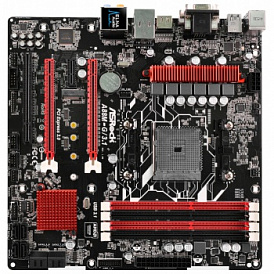How to choose a router
Router - a device for the formation of a local network. Most often used to ensure that the apartment or office has Wi-Fi.
How to choose a router: the main criteria

It is worth starting with the fact that the overwhelming majority of users do not need the technical specifications of the router and they are not important. If the device is needed only to distribute Wi-Fi, and no exotic requirements are imposed, then absolutely any will do.
However, to ensure a perfect user experience, you should pay attention to the following characteristics of the router:
-
Wireless standard;
-
Wireless frequency;
-
The presence of a USB connector and its functionality;
-
Data transfer rate;
-
Type of Internet connection;
-
Manufacturer.
Wireless standard
The wireless Wi-Fi network itself exists in several standards that do not have cross-compatibility. Their list is quite impressive:
-
802.11a;
-
802.11ac;
-
802.11b;
-
802.11g;
-
802.11n;
-
802.11ac IEEE.
To ensure broad compatibility, wireless equipment manufacturers add support for multiple standards. For example, the Nexus 5 smartphone is equipped with a Qualcomm module, which allows you to connect to virtually all types of networks - 802.11a / ac / b / g / n. But the Realtek RTL8188CE laptop network card supports only one Wi-Fi standard - 802.11n. Thus, if the laptop equipped with it tries to connect to the 802.11a / b / g Wi-Fi broadcasting, nothing will work.
But the most common standards are b, g and n. Therefore, it is advisable to purchase a wireless WiFi router for a house or apartment that broadcasts in this particular range. Better yet, see what network standards are used in current devices.
Wireless frequency

There are two frequencies in which a wireless network can broadcast - 2.4 GHz and 5 GHz. The first option is most widely distributed, and almost all devices that only support Wi-Fi are compatible with it.
But if it comes to buying a device for an apartment in a big house, then everything becomes not so simple. Many routers installed on the same area can “overlap” each other and “clog” the 2.4 GHz frequency. Therefore, a router that broadcasts at a frequency of 5 GHz will provide a more dense and high-quality coverage.
However, the frequency of 5 GHz is not supported by all devices. Therefore it is necessary to go on this or that compromise.
The 5 GHz network, by the way, has another important advantage. It is less sensitive to physical obstacles (walls, partitions, etc.).
USB connector and its functionality
Many models of routers are equipped with a USB connector. It is quite practical, because it has a wide functionality. So, you can connect to it:
-
3G / 4G-modem and use it as a primary or backup line to the Internet. It is important if you plan to use the router in the country (where there is no “cable” or “optics”) or the constancy of the connection to the network is critical;
-
USB flash drive or external hard drive.Then the router can be used as a DLNA or FTP server, just a file server (there is a slight difference between it and FTP) or even a torrent client;
-
Smartphone for recharging;
-
Printer. Then the router can be used as a print server.
It is worth remembering that not every router equipped with a USB connector has all these functions. For example, TP-Link TL-MR3220 budget router has this connector, but can use it exclusively to connect to the Internet via a 3G / 4G modem.
In addition, routers have a limited list of compatible devices. They do not support all USB modems, printers and hard drives. Specific compatibility information is most often listed on the router manufacturer’s website.
Data transfer rate

It is necessary to distinguish between "external" and "internal" data transfer rate. The first determines the maximum speed of data exchange between the router and the Internet. The overwhelming majority of models are gigabit, that is, they have a value of 1000 Mbps. Some old routers are connected to the Internet at a speed of 100 Mbit / s, but buying them in 2017 is impractical.
The “internal” rate determines the maximum data transfer rate from the end device to the router (as well as between devices and, in general, from device to the Internet and vice versa). Obviously, the higher it is, the better. However, it makes sense to overpay for the maximum values of the “internal” speed only if they are really needed. For the vast majority of users, 300 Mbps is enough.
Internet connection type
Routers are performed in three versions that differ in the type of Internet connection - WAN, ADSL and Wi-Fi.
If a PPPoE Internet connection with a static or dynamic IP is installed in your home or office, or the router enters an existing local area network, then you will need a model that includes access to the Internet via WAN.
ADSL routers are needed only if an ADSL connection is used and the corresponding modem is not installed on the network.
Some routers can connect to an existing Wi-Fi network and either use it as an Internet access point or repeat it. Occur infrequently, as they are needed quite rarely.
Manufacturers
The lion’s share of the router market is taken up by products from D-Link, TP-Link and Zyxel. The first are not recommended for purchase in any case. TP-Link in the budget price range - excellent "workhorses" for undemanding users.
Zyxel and TP-Link in the middle and top price range offer the broadest possibilities such as a file, print and DLNA server, broadcasting multiple SSIDs, etc.
In the following articles, our experts tellhow to choose an uninterruptible power supply for home and office, and secrets choosing a reliable router.
Attention! This material is the subjective opinion of the authors of the project and is not a guide to purchase.













